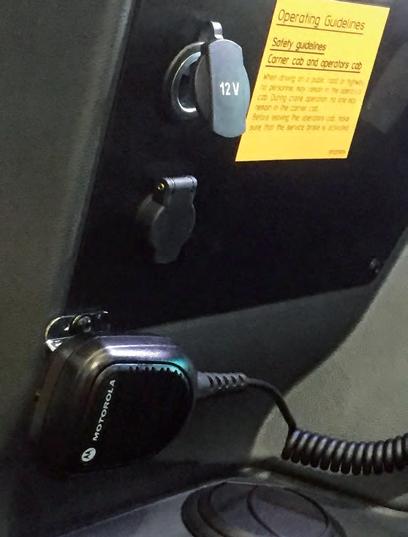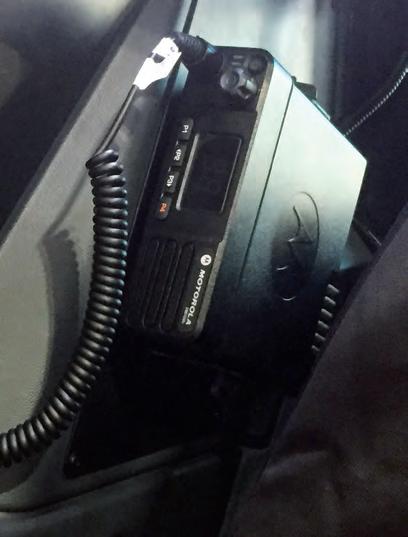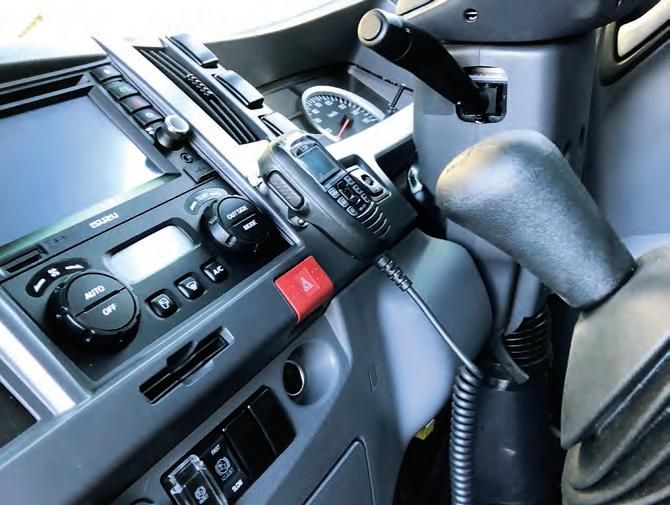
4 minute read
Robust Crane Communication Systems on Demand Red Radio Solutions for radio systems in the crane sector
ROBUST CRANE COMMUNICATION SYSTEMS ON DEMAND
Radio systems play a critical role in the crane sector, but they can often be taken for granted and treated harshly. Red Radio Solutions has the answers for most applications.
RED RADIO SOLUTIONS HAS BEEN working in the crane sector for five years providing hire, sales and service solutions for two-way radio equipment.
According to Directors Casey-Lee and Glenn Powell, the business has evolved quickly.
“When we first started, we focussed on tower cranes and developed a number of items specifically for that sector. Due to the success in that market, we’ve now taken our products and services into the mobile crane market and we’re now a one-stopshop for crane related two-way radio applications,” said Mr Powell.
Red Radio Solutions predominantly use Motorola handsets due the robust nature of the products. “A major advantage with our system is that our technicians are qualified and Australian Communications and
Media Authority (ACMA) accredited. This means they have an understanding of how to run the antenna cable to the ACMA standards. When we install we provide chargers hardwired into the cabin so the equipment can charge when the crane is parked in the yard. We also install UHF CB radios in the front cabin as well as the Motorola base in the back cabin. Our technicians understand how expensive the cranes are and are mindful not to drill holes where they don’t need to,” he said.
Red Radio Solutions also manages the frequency management process.
“Our customers have to apply to the ACMA for frequency use, and we manage the paperwork to ensure everything is up to date. The

frequency provides operators with a private channel to ensure there is no interference between the dogman and other radio users and no cross communication with multiple cranes on site, said Mrs Powell.
“With the rental side of the business, we can arrange for daily weekly and monthly hire.”
“We find that the majority of mobile crane businesses buy their equipment and we apply to the ACMA for an annual licence covering 12 months of frequency. The licence is an Australian or a NSW wide frequency and that allows them to operate that frequency for six weeks in one spot or to move it around to where the projects are. Tower cranes have to be site specific because they can be on site for more than a year,” she said.
“We provide systems to some small and really large clients and we cover a good cross section in the mobile sector.”
According to Mr Powell, customer focus is a key factor in the success of the business.
“We provide a 24/7 service and our technicians will install on Sundays if required. We work around the customer, their business needs and what works for them. We

Red Radio Solutions provide 24/7 service.

understand how fundamental radio communication is for the crane crews, so we offer a fast and reliable service. We also offer loan radios if units need repairing, to ensure there is no down time for the customer and their cranes,” he said.
Red Radio Solutions can also provide communication systems for complex construction sites that include multiple cranes, construction and earthmoving equipment.
“Our system can cope with as many units as required,” said Mrs Powell.
“On a couple of the construction sites where there’s a tower crane, a mobile crane and a concrete pump operating we’ve provided a separate radio to each,” she said, “that way, if they are working within each others radius and it becomes dangerous, they can communicate and even tell each other to stop operations.”
“We don’t see the radio technology changing too much in the short term. Although there has been a push to change from analog to digital, it is apparent crane operators don’t like digital,” said Mrs Powell.
“There can be delays in communication, which can be dangerous in this business. Also, to take
advantage of digital, the unit has to be operated in a particular way which isn’t always practical for the dogmen. Bluetooth connectivity can also be difficult, with drop outs too frequent and the responsibility for keeping the blue tooth charged falling to the dogman and operator which can be problematic.”
“In our opinion two way analog is an affordable and robust way for the crane sector to communicate into the future,” she said .










